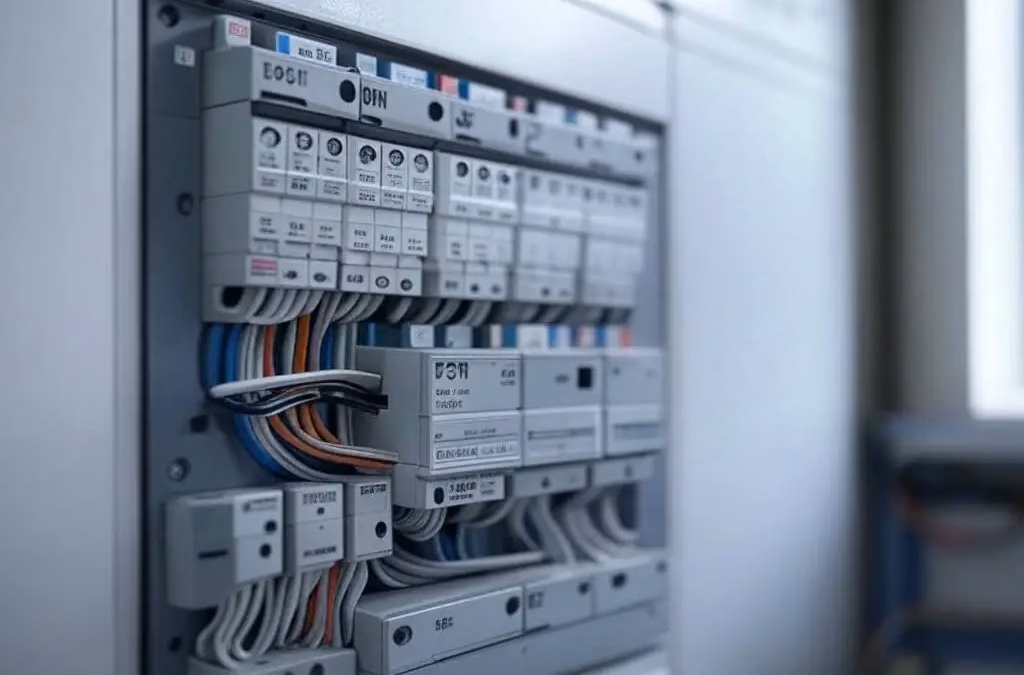Introduction
In the evolving world of electrical systems, plug-on neutral (PON) panels and breakers have emerged as a significant innovation, particularly for residential applications. These systems streamline installation, enhance safety, and reduce clutter in electrical panels. This blog post explores the descriptions, benefits, major manufacturers, and recent developments surrounding plug-on neutral technology, providing a thorough understanding for homeowners. Need help or want more information? Have questions or need help? Call: 321-674-9667
What Are Plug-on Neutral Panels and Electrical Load Devices and Breakers?
Plug-on Neutral Panels
A plug-on neutral panel is a type of electrical load center designed to simplify the installation of Arc-Fault Circuit Interrupter (AFCI) and Ground-Fault Circuit Interrupter (GFCI) devices and breakers. Unlike traditional panels, PON panels feature a neutral bar positioned close to the device bus bars, allowing specially designed devices to clip directly onto the neutral bar. This eliminates the need for a separate neutral pigtail wire, which is typically required in standard panels to connect AFCI or GFCI devices to the neutral bus.
Plug-on Neutral Devices
Plug-on neutral devices are AFCI or GFCI devices engineered to work with PON panels. These devices have a clip or terminal that connects directly to the neutral bar, bypassing the pigtail connection. They often include a rejection feature to ensure compatibility only with PON panels, preventing installation in standard panels where the neutral bar configuration differs. Regular devices (non-AFCI/GFCI) can also be used in PON panels, but they connect to the neutral bar using traditional wiring methods.
Key Differences from Traditional Systems
- Neutral Connection: In traditional setups, AFCI and GFCI breakers require a pigtail wire to connect to the neutral bar, which can clutter the panel. PON breakers clip directly onto the neutral bar.
- Panel Design: PON panels have a metallic neutral rail connected to the neutral bar, while non-PON panels use a plastic rail, limiting breaker compatibility.
- Compatibility: PON breakers are not compatible with standard panels due to physical design differences, but PON panels can accommodate both PON and standard breakers.
Benefits of Plug-on Neutral Panels
The adoption of plug-on neutral technology offers several advantages, making it a preferred choice for modern residential electrical systems:
- Faster Installation
- Reduced Clutter
- Improved Safety
- Space Efficiency
- Compatibility with Standard Breakers
- Enhanced Safety Features
- Professional Appearance
Major Manufacturers
Several leading electrical equipment manufacturers produce plug-on neutral panels and breakers, each offering unique features and product lines:
- Square D (Schneider Electric)
- QO Series: Square D’s QO plug-on neutral panels and breakers are widely used in residential applications. The QO PON panels feature a metallic neutral rail and are designed for easy installation of AFCI and GFCI breakers. QO breakers are known for their reliability and compatibility with both PON and non-PON panels (when using pigtail breakers).
- Homeline Series: The Homeline PON panels have an extended neutral bar with spaces for breaker clips, offering similar benefits to the QO series but at a more budget-friendly price point.
- Features: Square D emphasizes reduced clutter, faster installation, and robust safety features.
- Eaton
- BR and CH Series: Eaton’s BR and CH plug-on neutral load centers and breakers are designed for time and labor savings. The “Rock N Lock” design ensures a secure connection, and self-leveling drywall offset tabs simplify installation. Eaton also offers advanced diagnostic technology for troubleshooting.
- Features: Eaton focuses on labor-saving solutions, professional aesthetics, and industry-leading technology.
- Siemens
- SA Plug-on Neutral Panels: Siemens offers PON panels and breakers that support AFCI and GFCI applications. These panels are designed for residential use and are compatible with standard breakers, making them versatile for upgrades or new installations.
- Features: Siemens emphasizes compatibility and compliance with modern electrical codes.
- Leviton
- Load Centers: Leviton provides PON panels that are gaining popularity, particularly for residential upgrades. While less common than Square D or Eaton, Leviton’s panels are designed for ease of use and safety.
- Features駆vFeatures: Leviton focuses on user-friendly designs and compatibility with modern electrical standards.
Applications and Use Cases
Plug-on neutral panels and breakers are primarily used in residential settings, where AFCI and GFCI breakers are increasingly required by electrical codes (e.g., the National Electrical Code, or NEC). Common applications include:
- New Home Construction: PON panels are ideal for new builds, where compliance with modern codes requiring AFCI and GFCI protection is mandatory.
- Panel Upgrades: Homeowners replacing outdated or undersized panels (e.g., 100-amp to 200-amp) often choose PON panels for their ease of use and future-proofing.
- Subpanels: PON panels can be configured as subpanels, though care must be taken to separate neutral and ground connections, often requiring an additional grounding bar.
- Renovations: Adding circuits for high-demand appliances (e.g., EV chargers, kitchen appliances) benefits from the space efficiency and speed of PON systems.
Considerations and Limitations
While PON systems offer many benefits, there are some considerations to keep in mind:
- Compatibility Issues
- PON breakers are not compatible with standard panels due to physical design differences, such as the neutral clip and rejection feature. Attempting to use a PON breaker in a non-PON panel may result in improper mounting or loss of AFCI/GFCI functionality.
- Older AFCI/GFCI breakers with pigtails may not fit in some PON panels due to space constraints.
- Cost
- Code Compliance
- Nuisance Tripping
- Availability
Recent Developments and Trends
As of 2025, plug-on neutral technology continues to evolve, driven by advancements in electrical safety and code requirements:
- Increased Adoption: The NEC’s expanding requirements for AFCI and GFCI protection (e.g., for bedrooms, kitchens, and garages) have boosted demand for PON systems, particularly in new construction and major renovations.
- Improved Diagnostics: Manufacturers like Eaton are integrating advanced diagnostic features into PON breakers, making it easier to troubleshoot issues like arc faults or ground faults.
- Supply Chain Challenges: Recent discussions on forums indicate that supply chain issues have occasionally limited the availability of specific PON breakers, prompting some electricians to explore workarounds (though these may violate codes).
- Debate on AFCI Reliability: Online communities, such as Reddit’s r/electricians, have highlighted ongoing debates about AFCI breaker reliability, with some professionals advocating for exemptions or alternatives due to nuisance tripping. Proposals for NEC changes (e.g., exceptions for certain appliances) are under consideration but have not yet been widely adopted.
Installation Tips
For those considering PON panels and breakers, here are some practical tips:
- Verify Compatibility: Ensure your panel is PON-compatible before purchasing PON breakers. Check manufacturer specifications or consult an electrician.
- Work from Bottom Up: Install PON breakers from the bottom of the panel upward, reserving the top for standard breakers to maximize gutter space.
- Safety First: Always turn off the main power supply and wear appropriate personal protective equipment (PPE) when working on electrical panels.
- Consult a Professional: For complex installations or code compliance, hire a qualified electrician to ensure safety and adherence to local regulations.
- Label Circuits: Take advantage of the cleaner PON panel design to clearly label circuits, simplifying future maintenance.
Conclusion
Plug-on neutral panels and breakers represent a significant advancement in residential electrical systems, offering faster installation, reduced clutter, enhanced safety, and compatibility with modern code requirements. Major manufacturers like Square D, Eaton, Siemens, and Leviton provide a range of PON products tailored to various needs, from new construction to panel upgrades. While there are considerations like cost and compatibility, the benefits of PON technology make it a compelling choice for homeowners and electricians alike.
As electrical codes continue to evolve and technology improves, plug-on neutral systems are likely to become even more prevalent, further simplifying and securing home electrical installations. Whether you’re planning a new build or upgrading an existing panel, PON panels and breakers are worth considering for their efficiency and professional finish.
Have you used a plug-on neutral panel or breaker in your home or projects? Share your experiences in the comments below! Have questions or need help? Call: 321-674-9667


